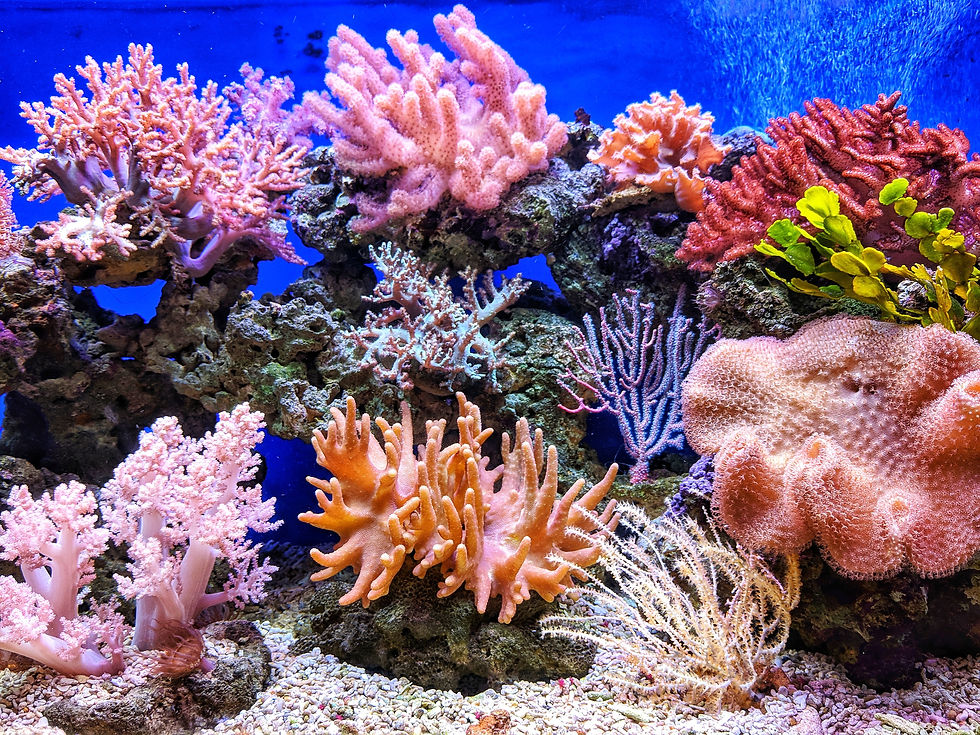5 Easy Steps To Help Save Our Oceans
- Lily Smith

- Jun 26, 2021
- 4 min read
Updated: Aug 16, 2021
The COVID-19 pandemic changed how we shop for clothing. For me online shopping became a guilty pleasure and ordering clothes became a bit of a bad habit. But apparently I am not alone in increasing my consumption of clothing during lockdown.
With the closure of non-essential stores people are substituting online shopping for visiting stores in person. The audience for fashion and online shopping is changing and increasing.
But with this increase in demand comes an increase in production and use of harmful materials that is negatively impacting our environment and oceans. 20% of industrial water pollution comes from textile treatment and dyes.
This is something that not everyone is educated on, but requires global change. We need to unite to make an impact. There are 750 million people in the world who don’t have access to drinking water. Yet 200 tons of fresh water is needed to dye one ton of fabric. We need to become more aware of the impact our consumption habits are having and help make a change.
So here is a 5 step guide to help educate yourself on the impact that your consumption habits are having on our oceans.
1. Avoid Fast Fashion Chains
A lot of these chains require fresh water to dye fabrics and manufacture their products along waterways. The water waste produced by these chains is often distributed back into the rivers and waterways. Leaving long lasting damage and having a direct effect on communities.
Fast fashion manufacturers often use plastic packaging for their bags and parcels, which can end up in the ocean and washed up on beaches and shores. This plastic is “chocking our ocean” with 8 million tonnes of plastic ending up in the sea every year. This kills and harms marine life and is a prime example of how our footprint is affecting Earth.
2. Download Some Educational Apps
Now I know all of you have access to the Internet otherwise you wouldn’t be reading this. So whilst your browser is open just do a quick Google search of some of your favourite brands to see how sustainable they are. There are now a number of websites and apps dedicated to helping you find more sustainable fashion. A few examples being ‘Sustain Your Style’ and ‘Renoon’.
Making it easier than ever to educate yourself on what brands are moving towards more sustainable choices. It may not be as simple as taking brands words for it, but with the help of these apps and websites you can now check whether your favourite clothing chains are actually working to reduce their footprint. Awareness towards water pollution and sustainable fashion is now more important than ever. Small actions are needed to make a big difference.
3. Choose Your Fabrics Wisely
Certain fabrics and textiles take more water consumption and chemicals to produce. Actively avoiding them inevitably reduces the demand for their production. I would urge you to choose clothing made from organic and natural fibre, like linen, sustainable cotton or lyocell, in order to reduce the chemicals in production.
Another tip is to keep an eye out for garments with a certification label on, which indicates that chemicals were controlled in production. Some of these labels may be OEKO-TEX, GOTS and BLUESIGN. We all need to be consuming fabrics that help rather than hinder pollution and the overall footprint the fashion industry is creating.
4. Recycle and Up-Cycle
It is easy to become reliant on fast fashion brands with their low prices and easy access to an array of clothing. But one of the great things about the pandemic is that up-cycling and reusing old clothes has become a trend. It is a good way to fill our days in lockdown. I am sure everyone has seen at least one video of people tie-dying socks or cropping their dad’s old shirts.
Online shopping is causing such an increase in packaging and plastic production, up-cycling is the way forward. Recycling clothes is also just as easy, hand-me-downs and re-worked clothing is better for the environment and creates a more diverse fashion industry. You get new clothes cost free and reduce the fashion industries polluting footprint.
5. Learn the Importance of 2nd Hand Clothing
Giving your clothes away to charity is a great way to reduce the ‘throw-away culture’ that is bred through fast fashion whilst also giving back to communities and charitable organisations. But with some stores remaining closed during lockdown there are now more ways to buy 2nd hand clothing that is becoming popularised. Apps like Depop and Vinted now make it easy to buy and sell clothes online.
Items advertised on these sites are often cheaper than buying from fast fashion brands and are a great way to recycle your clothes, meaning that you are reducing your waste and gaining a better relationship with your wardrobe.
So clear out your drawers and give your clothes a new home. Just make sure that you are sending them off in recyclable packaging!
So, if you are like me and are on a journey to make more sustainable choices and create a better relationship with the fashion industry follow these easy steps. It’s the small things that will make a big impact. This is the time to be making better decisions as consumers. Rather than feeling guilty every time we watch blue planet or read about water pollution.
Let’s make some small lifestyle changes to help better our planet and save our oceans.



Comments